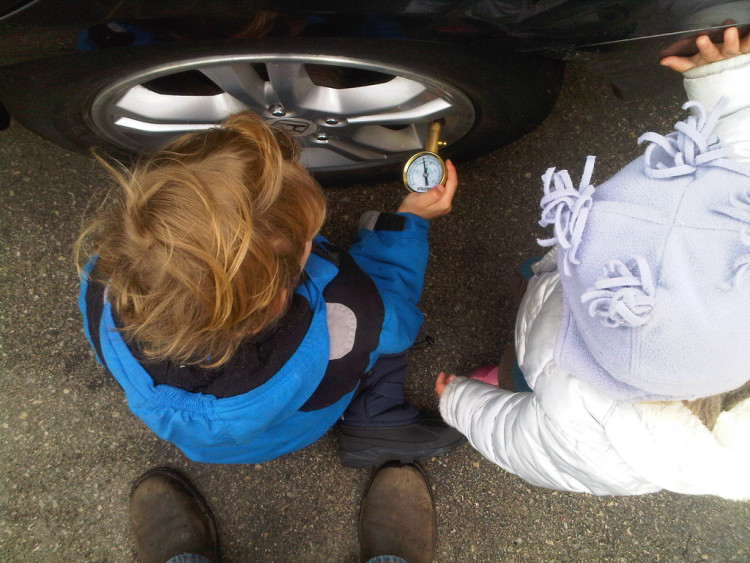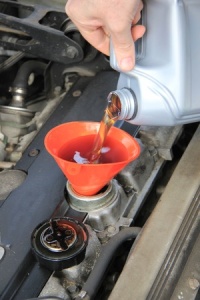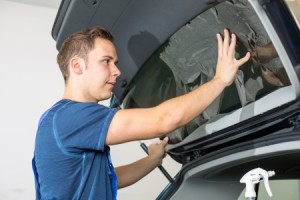How Often Should I Check my Tire Pressure?
 Everyone knows how to determine if their car is running low on gas, but how can you tell if your tires are running low on air? Tire pressure is often overlooked, but proper inflation is key to extending the life of your vehicle and your tires. In fact, not only will properly inflated tires extend the life of your tire tread, but it will also save you money on gas and keep your family safer on the road. Below, we discuss the in’s and out’s of proper tire pressure.
Everyone knows how to determine if their car is running low on gas, but how can you tell if your tires are running low on air? Tire pressure is often overlooked, but proper inflation is key to extending the life of your vehicle and your tires. In fact, not only will properly inflated tires extend the life of your tire tread, but it will also save you money on gas and keep your family safer on the road. Below, we discuss the in’s and out’s of proper tire pressure.
Why should I care about my tire pressure?
Some people believe as long as their tires pass the eye test, they are properly inflated (i.e. My tires don’t look flat, so they must be good to drive on). While it’s always a good idea to visually inspect your tires before you get behind the wheel, you could be compromising your safety and hard-earned money if your tires are over or underinflated.
- Overinflated tires are problematic because it decreases the amount of tread that can touch the ground. This means you’ll have less stability and traction. Over-inflation can also make a tire more susceptible to blowout.
- Underinflated tires will wear out faster than their properly inflated counterparts. Because your wheels are compensating for the added stress of low tire pressure, they will begin to overheat. Hot tires lose their tread much quicker than tires that are operating at the optimal temperature.
- Properly inflated tires will save you money at the gas pump. According to the U.S. Department of Energy, you can improve your gas mileage by over 3% by keeping your tires at the proper pressure level. That’s roughly 12 cents a gallon. Assuming the average consumer fills up their 15-gallon tank once a week, properly inflated tires will save you $93.60 a year.
When should I check my tire pressure?
Regular tire pressure checks are the best way to ensure your tires are running at the optimal pressure level. Give your tires a visual check every time you approach your vehicle, and get in the habit of preforming another check when you’re at the pump. You can find a handheld pressure gauge at your local hardware store, and keeping the gauge in your vehicle makes checking your tires a breeze. If you check your pressure while you’re getting gas, you can usually always find a pressure pump close by if you’re running low. If you don’t want to check your tires that often, a good rule of thumb to follow is to check your tire pressure once a month.
-
Change Your Car’s Oil in 8 Easy Steps
 Oct 22, 2014
Oct 22, 2014We love swapping out old oil for a new quart, but if you’re looking for an easy DIY project before the weather gets too cold, consider changing your own oil. It’s a rather simple process that we’ll explain in eight easy to follow steps. 1. Let your car run for a minute or two – […]
-
Minnesota Window Tint Quiz
 Jul 16, 2014
Jul 16, 2014With summer in full swing, many Minnesotans are considering tinting their car windows in an effort to keep their car cool when the temperatures rise. We specialize in window tinting, and while some people prefer to tint their windows on their own, you’ll want to make sure you stay in line with the law. We […]
-
Go Green With These Car Care Tips
 Mar 19, 2014
Mar 19, 2014Although St. Patrick’s Day has come and gone, we thought we’d stick with the spirit of the holiday by discussing some “green” car care tips. Proper Tire Care – Taking care of your tires is one of the easiest ways to improve your fuel efficiency. The farther you go on a tank of gas, the […]




